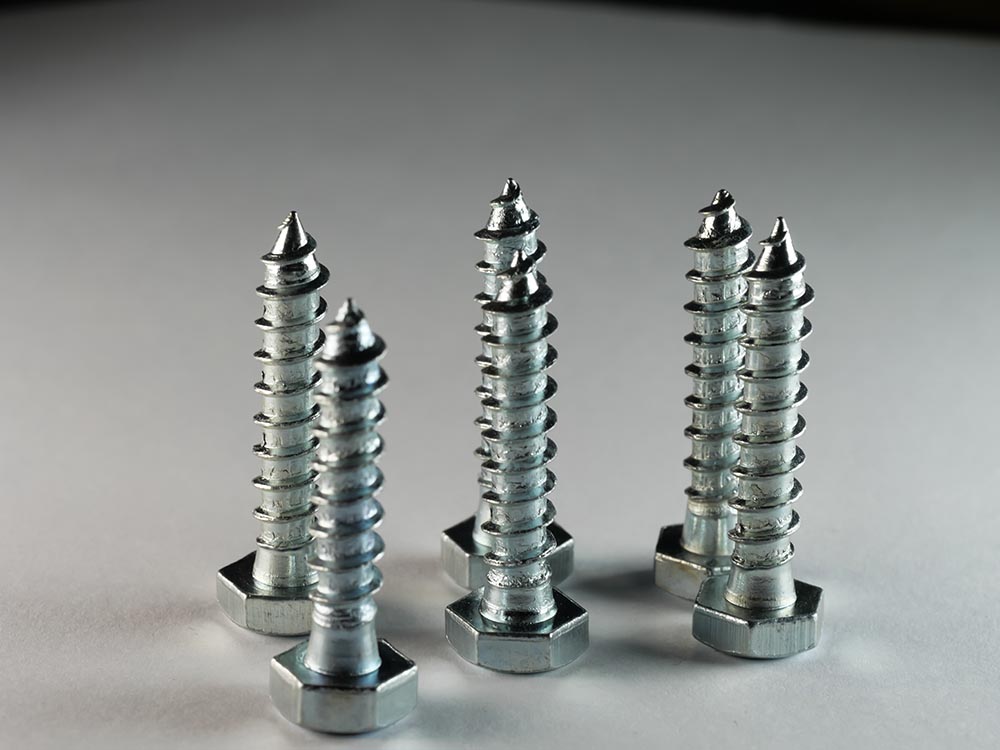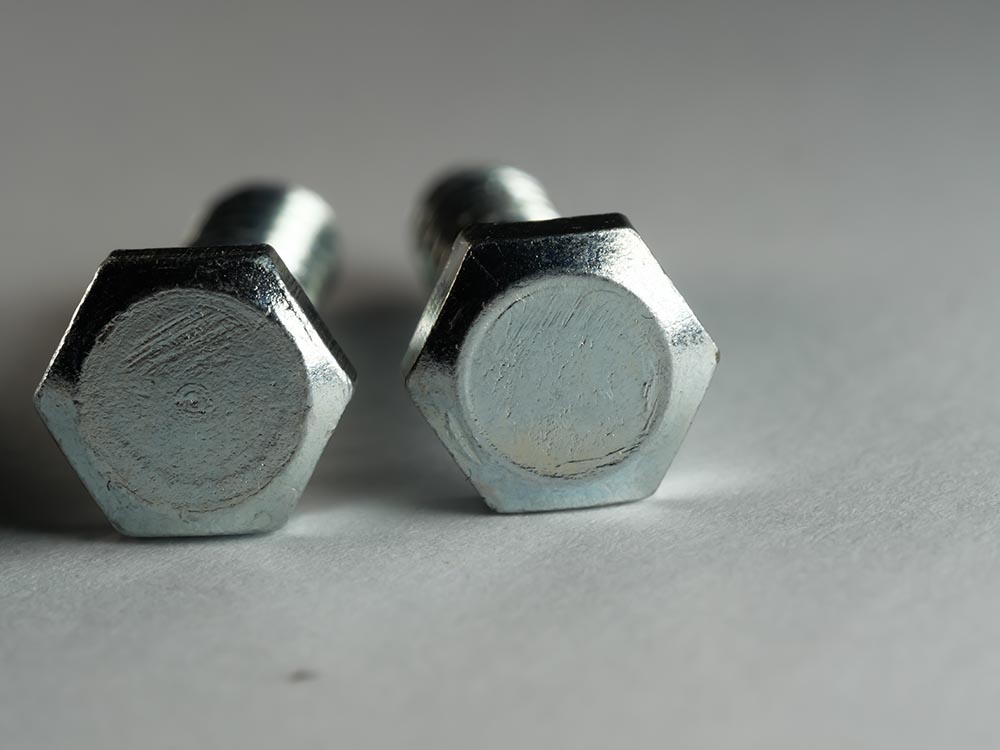Lag Screw vs Lag Bolt: Facts & FAQ
-
Pete Ortiz
- Last updated:

This might come as a surprise to many DIY fans, but lag screws and bolts are essentially the same thing. And the correct term here is a lag screw—you shouldn’t really call this fastener a lag bolt as it doesn’t come with a nut/washer. So, why do people say lag bolt, anyway? What is the best use for this fastener?
Which materials does it work best on? And finally, how much do these screws cost, and how long do they last? These are just some of the questions we’ll cover in this guide. So, if you want to finally solve the great mystery of lag screws/bolts and learn how to use them properly, keep on reading!
Different Names, the Same Fastener
Alright, let’s start by answering the big question: why does the term “lag bolt” even exist? Well, it does look very much like a bolt as the tip isn’t very sharp. Next, in contrast to most modern-day screws, the shank is relatively big. The threads don’t go all the way up to the head (which, again, is not common for a screw), and that’s exactly why you might mistake these screws with bolts.
And since many bolts are sold without any nuts or washers in the package, it is even harder for the average person to figure out that they’re dealing with a screw. More importantly, while most screws are self-drilling, the same can’t be said about bolts. We say most because lag screws are NOT self-drilling—they’re only self-tapping. Finally, their heads are hexagonal: you’ll have to tighten them with a wrench.

The Best Uses for a Lag Screw
What’s the biggest pro of using lag screws? They’re incredibly sturdy, tough, and reliable. If you’re working with heavy-duty materials like lumber, lag screws will be a great pick. They easily handle heavy loads and high pressure, which tends to be a problem for most regular wood screws. In construction, these fasteners are the go-to choice for lumber.
Thanks to the extended length (compared to the average-sized screw/bolt), they do an excellent job of holding large pieces of wood. Lag screws aren’t the best pick for metal, though. Originally, these screws were manufactured to be used on barrel staves/lags (yes, hence the name).
How Do You Use Them the Right Way?
Once you’ve figured out exactly where you want the screw to go, the next thing to do would be to drill a pilot hole. Grab your impact driver and make sure you have a bit that fits the size (or, rather, the diameter) of your screw’s shank. That way, the screw will go in easily but still get strong enough thread engagement. How do you figure out the diameter? Most likely, you’ll find it on the screw’s package.
The depth also matters: the pilot hole needs to match the screw in length. Lag screws do have a pointy edge, but they still rely on a drill/impact driver to make that hole for them. Without a drill, you’ll have a very hard time trying to drive a lag screw in. That’s another reason why it’s often called a bolt, even though it doesn’t have a nut and washer.

Is Protective Equipment Required?
Screws are safer and less harmful than nails. Even if you have very little experience with these fasteners, it will be harder to hurt yourself. Still, we recommend putting on a pair of work gloves to keep your hands protected at all times. And what about the eyes—do they need to be covered?
While this isn’t a strict requirement, it would be best to wear eye goggles. As we just learned, the best way to use a lag screw is to drill a pilot hole first and then put the screw in. Modern-day drills aren’t at all “messy” and keep the number of chips to a minimum. But, if you do have goggles or a mask available, do put that on.
How Much for a Set of Lag Screws/Bolts?
Lag screws are more expensive than a regular set. That’s because they’re bigger and have a stronger grip. Plus, they boast an above-average lifespan. The price mostly depends on the length and on how many screws are in the package. For example, a 12-inch lag screw/bolt will cost you $3.50, while an 18-inch device will set you back $4–$5. That’s the cost of one single screw.
In contrast, 4-inch screws are available for a little over $1; 2-inch units are even cheaper ($0.70–$0.80). Besides, if you buy a whole package, you’ll get a nice discount at most hardware stores.

What’s the Average Lifespan?
As mentioned, lag screws are specifically designed for heavy-duty projects. They are much better at handling natural elements than most fasteners. Now, if you want them to last for a lifetime, make sure the screws are crafted from stainless steel. Regular steel is very weak against corrosion. But if it’s zinc-coated (through hot-dip galvanizing), that will greatly extend the lifespan.
Most Common Alternatives
Lag screws are very popular due to their flexibility and accessibility. However, they’re slowly but steadily being replaced by structural screws. These are thinner, longer, and of higher quality. Oh, and you won’t have to make pilot holes for structural screws. As for the downsides, they’re a lot more expensive, like 2–3 times the price of lag screws. Furthermore, it might be a bit of a challenge to find them at a local store.
In Conclusion
When it comes to construction tools and devices, there tends to be a lot of confusion. This is especially true for screws and bolts. In many ways, they look alike, and that’s why they’re constantly mistaken for one another. And in other cases, we use different terms to describe the same thing, like in the case of the lag screw/bolt dilemma.
Today, we learned that there are no lag bolts out there—only lag screws. And while many DIY fans and even pros still like to call these fasteners lag bolts, we’d still recommend going with lag screws, as that’s the correct definition. Keep yourself from harm’s way, use lag screws properly, and stop calling them bolts!
- When and How To Drill a Pilot Hole
- Self-Drilling vs. Self-Tapping: What’s the Difference?
- What is the difference between a lag and metal screw?
- Structural Screws vs. Lag Bolts: What Are the Differences?
- Lag Screws: An Overview of This Strong Fastener
- Wikipedia – Hot-Dip Galvanization
- Bolt Depot – Lag Bolt Prices
Featured Image Credit: Wirestock Creators, Shutterstock
Contents



